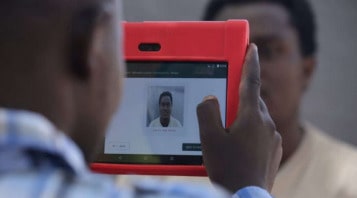A leading politician in Kenya is calling for the establishment of an integrated African digital identity in order to foster connectivity and strengthen economic ties on the African continent. But if Kenya is a model, it has yet to demonstrate it can implement a national digital ID that protects fundamental rights.
Digital ID silos prevent sharing of resources on rapidly evolving tech
Eliud Owalo, Kenya’s cabinet secretary (CS) for information and communication technology, has been a vocal proponent of national digital identity initiatives, insisting that his Maisha Namba plan for a digital ID program in Kenya will succeed where others have failed. Now, in a government release quoting his remarks in Nairobi during the launch of the 2024 Transform Africa Summit (TAS), he says it is no longer enough for countries to conduct digital transformation in silos.
“We have been doing our own initiatives at individual country level but we need to move forward in tandem as one united Africa digital economy,” Owalo says. “When it comes to policies, laws and regulations, we need to have them in a way that we speak to each other as opposed to being discordant to each other.”
Owalo’s vision for a continental digital ID encompasses digital public infrastructure, data centers, digital job training, digital entrepreneurship and digital identities. He cites the aspirations of the African Continental Free Trade Area (AfCFTA) in arguing that a unified digital ID for Africa that fits into each country’s digital infrastructure is necessary to achieve the continent’s stated economic goals. His model imagines an Africa that would “think and act jointly and leverage each other’s strength, enjoy economies of scale, reduce the unit cost and have better bargaining power in the global digital market.”
Several others have picked up Owaldo’s theme, calling for synchronization of policies to enable better sharing of resources on emerging tech like biometrics, cloud computing and generative AI. In general, their declarations agree that digital transformation is no longer a problem of the future, but a process that has already begun.
In the words of David Mugonyi, director general of the Communications Authority of Kenya, “it is through sharing ideas and experiences that we are able to converge at a common ground and agree on what we have to do to achieve our collective aspirations as a continent.”
Kenya’s refreshed national digital ID raising familiar human rights flags
Kenya has already digitized more than 5,000 government services as part of the digital transformation push, and plans to issue at least three million digital national IDs before the end of 2024. However, the current digital ID rollout is haunted by the albatross of Huduma Namba, the disastrous previous national digital ID scheme launched in 2019 by the government of then-president Uhuru Kenyatta. Government records show that by the end of 2022, the Huduma Namba had eaten through more than ten billion Kenyan Shillings (US$69 million), leaving behind little but a smoldering cautionary tale. Its downfall is largely attributed to failing to factor human rights, data security and privacy into its design and rollout.
While Owalo preaches the gospel of a unified African digital ID, there have already been echoes of the Huduma Namba debacle in the design and rollout of the Maisha Namba digital identity. In December, the Kenyan High Court ordered a pause on the rollout of the program due to a lack of a data protection impact assessment. (The injunction was lifted in February.) Amnesty International’s Kenya branch has issued an advisory policy paper with suggestions on how to balance digital ID and digital government initiatives with fundamental human rights. And there is general fear among activist groups that, in the case of a Kenyan national digital ID, history is doomed to repeat itself.
Article: Is it time for an integrated African digital identity?
